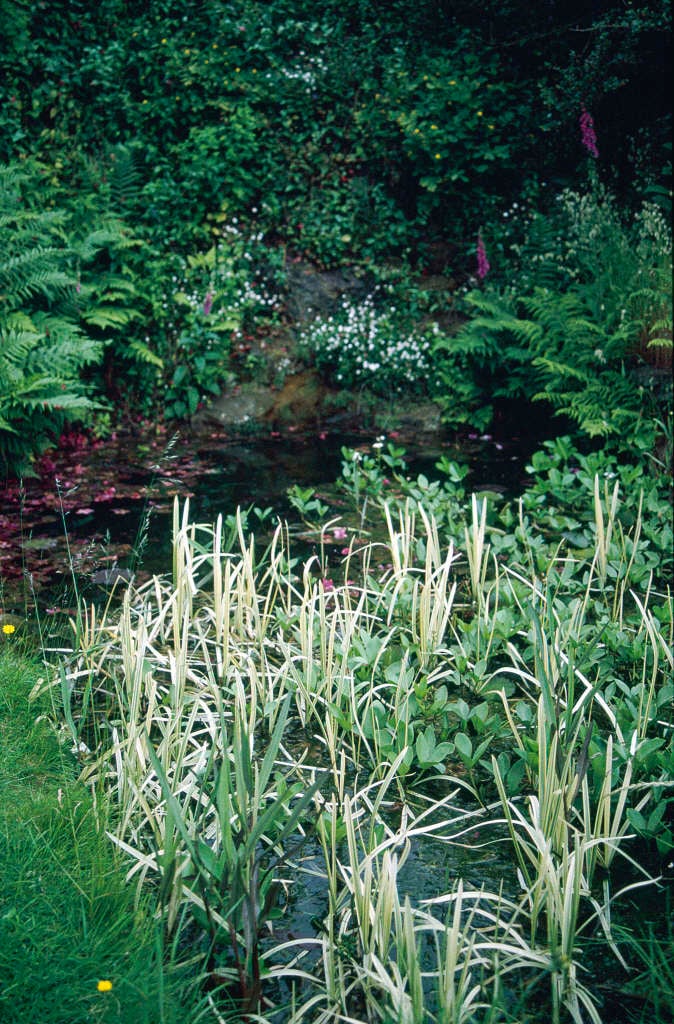Glyceria maxima var. variegata (v)
variegated reed sweet-grass
A strong-growing rhizomatous perennial forming extensive stands of narrowly strap-shaped leaves striped with cream and sometimes tinged with pink, and with purplish-green flowering panicles in late summer

Buy this plant
Size
Ultimate height
0.5–1 metresTime to ultimate height
2–5 yearsUltimate spread
1.5–2.5 metresGrowing conditions
Moisture
Poorly–drainedpH
Acid, Alkaline, NeutralColour & scent
| Stem | Flower | Foliage | Fruit | |
| Spring | Cream Green Pink | |||
|---|---|---|---|---|
| Summer | Green Purple | Cream Green Pink | ||
| Autumn | Cream Green Pink | |||
| Winter |
Position
- Full sun
Aspect
South–facing or West–facing
Exposure
Exposed or Sheltered Hardiness
H6Botanical details
- Family
- Poaceae
- Native to GB / Ireland
- No
- Foliage
- Deciduous
- Habit
- Suckering
- Genus
Glyceria are vigorous, spreading, moisture-loving or aquatic, rhizomatous perennial grasses, with narrowly strap-shaped leaves and green or purple-tinged flowering panicles in late summer
- Name status
Unresolved
How to grow
Cultivation
Grow in any reliably moist, fertile soil or in water up to 15cm deep, in full sun. Divide every few years to prevent congestion; has the potential to become a nuisance if not managed well. See pond plants and bog gardens for further advice
Propagation
Propagate by division in spring
Suggested planting locations and garden types
- Wildlife gardens
- Low Maintenance
Pruning
Leaves can be cut back when they die off in late autumn
Pests
Generally pest-free
Diseases
Generally disease-free
Get involved
The Royal Horticultural Society is the UK’s leading gardening charity. We aim to enrich everyone’s life through plants, and make the UK a greener and more beautiful place.